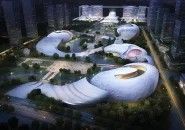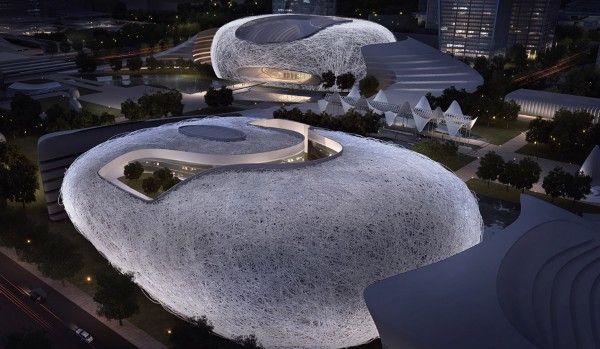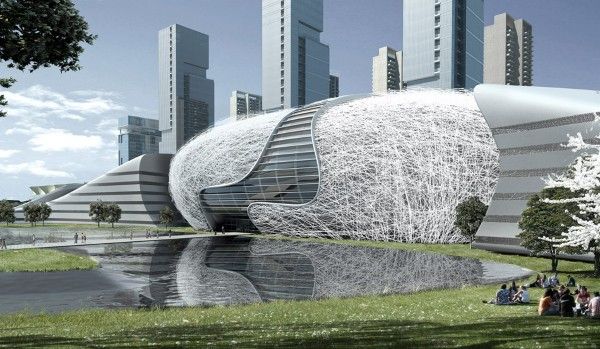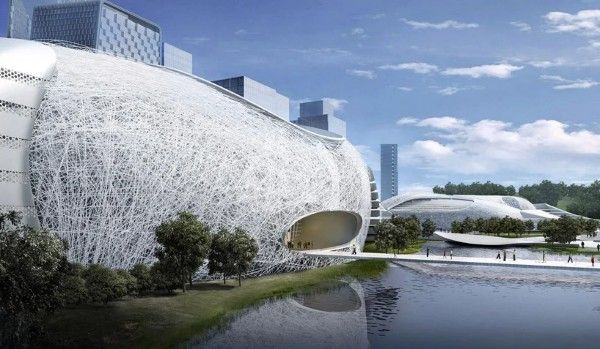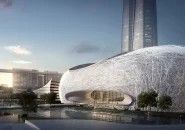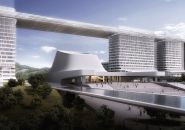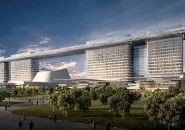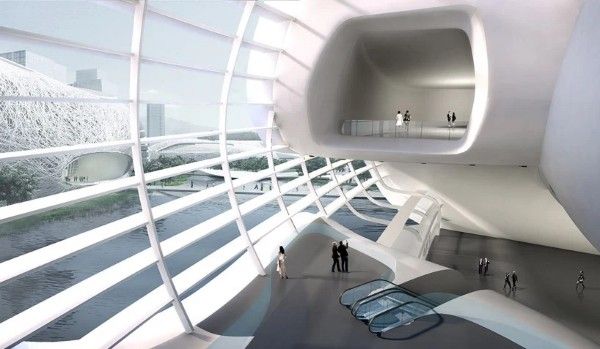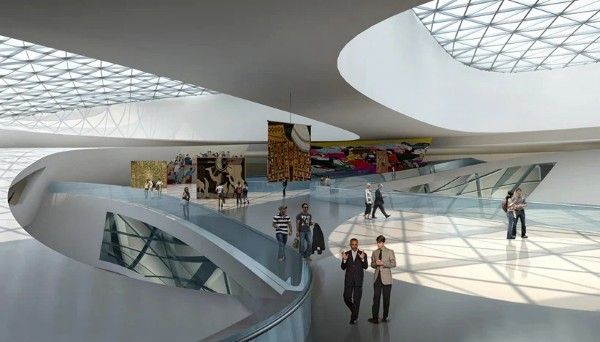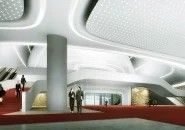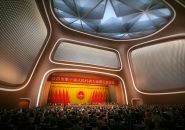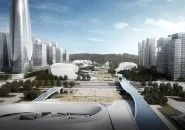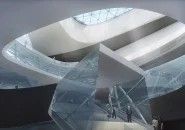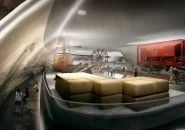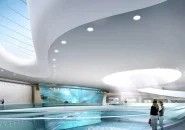The Yichang new district master plan by amphibianArc is conceived as a representation of the local shan shui, which is Chinese for mountains and water. On a site overlooking the Yangtze River, the design creates a balance between land and water, introducing multi-functional water features amongst the orthogonal high and low-rise office buildings to produce a more dynamic space and environment for public use.
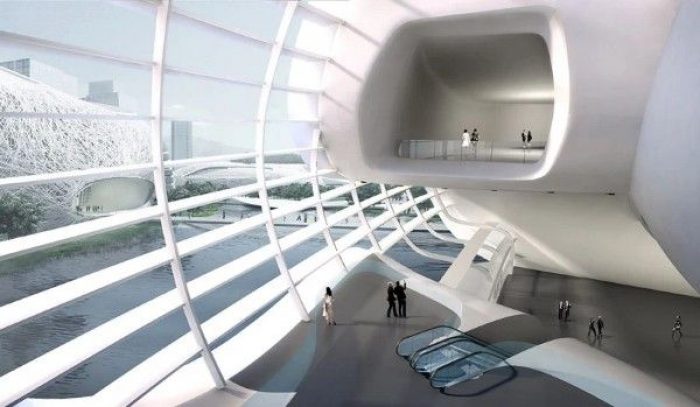
 The programs within the 1,430,000 square meters of the new district include a museum, planning exhibition center, and auxiliary programs such as administrative spaces and offices. Towards the northern end of the site, the highest peak is the public service center that includes four high-rise and four love-rise buildings evenly divided by the conference hall at the center. Organized around a central courtyard, the executive offices are arranged, placed closer to the earth to provider easier access to the public, while the administrative spaces are located in the upper levels of the tower.
The programs within the 1,430,000 square meters of the new district include a museum, planning exhibition center, and auxiliary programs such as administrative spaces and offices. Towards the northern end of the site, the highest peak is the public service center that includes four high-rise and four love-rise buildings evenly divided by the conference hall at the center. Organized around a central courtyard, the executive offices are arranged, placed closer to the earth to provider easier access to the public, while the administrative spaces are located in the upper levels of the tower. A system of ponds meander through the area as part of the rainwater harvesting system designed to take advantage of Yichang’s humid subtropical climate. Several kinetic sculptures disbursed throughout the plan are powered from water flowing through the pools across the gently sloping land.
A system of ponds meander through the area as part of the rainwater harvesting system designed to take advantage of Yichang’s humid subtropical climate. Several kinetic sculptures disbursed throughout the plan are powered from water flowing through the pools across the gently sloping land.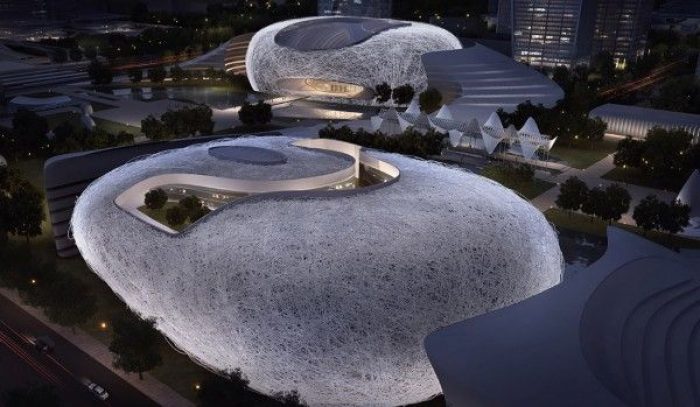
 The organic forms and structures in the southern end of the site are cladded with a silken lattice. This feature is a reference to the silk worm cocoon and a tribute to Chinese Empress Leizu whom invented the silk loom. The exterior covering is seen as an unrepeated pattern that is parametrically generated as to appear woven by nature, an effect which is amplified by the use of aluminum pipe with a small diameter so as to appear fragile and delicate. With an offset of 1.5 meters from the concrete shell of the buildings, the spun envelope acts as a shading and cooling device for interior spaces.
The organic forms and structures in the southern end of the site are cladded with a silken lattice. This feature is a reference to the silk worm cocoon and a tribute to Chinese Empress Leizu whom invented the silk loom. The exterior covering is seen as an unrepeated pattern that is parametrically generated as to appear woven by nature, an effect which is amplified by the use of aluminum pipe with a small diameter so as to appear fragile and delicate. With an offset of 1.5 meters from the concrete shell of the buildings, the spun envelope acts as a shading and cooling device for interior spaces.
From the inside, the cultural centers sweeping forms circulate visitors through open luminous galleries, interspersed with lighted auditoria and exhibition spaces.
public exhibition center exterior
museum exterior
Courtesy of amphibianArc



